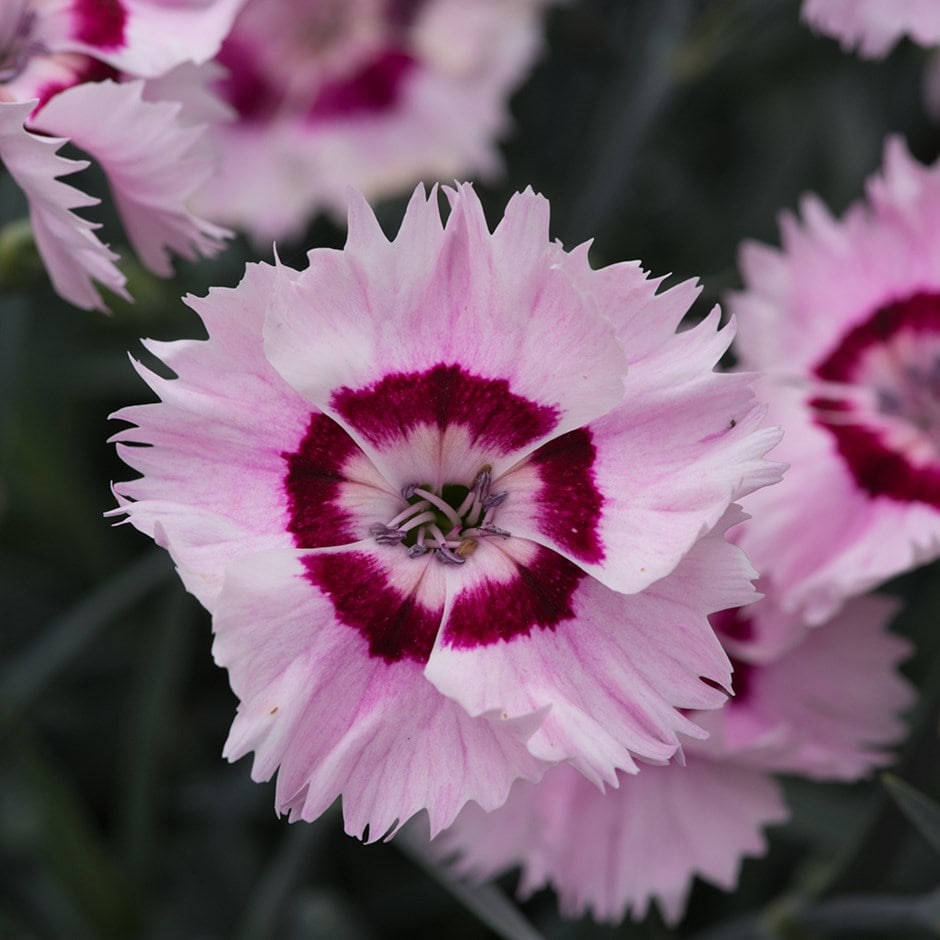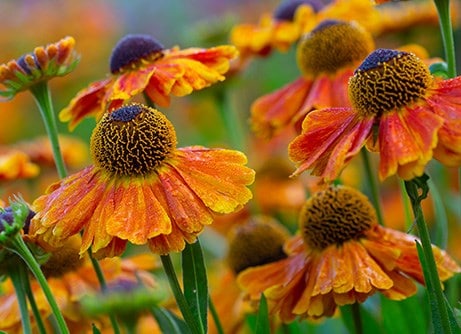Dianthus (Allwoodii Group) Cherry Daiquiri ('Wp15Pie42') (PBR) (Cocktail Series)
pot pink


RHS Plants Home Plants Bedding plants Garden ready size Dianthus (Allwoodii Group) 'Cherry Daiquiri ('Wp15Pie42') (Cocktail Series) PBR'
A stunning semi-evergreen perennial, forming fragrant mounds of blue-green foliage. In summer, stiff stems arise bearing unique and strongly scented single blooms.
Each flower opens with a pale pink ground before maturing to clean white, encircled by vibrant rings of reddish-pink, pink, and deep maroon. The ruffled petal edges and colourful collars around the white throats create an intriguing contrast.
'Cherry Daiquiri' is a sun-loving Dianthus that will perfume the garden with a medley of sweet and spicy tones while the slender grey foliage persists through mild winters to provide excellent texture.
Each flower opens with a pale pink ground before maturing to clean white, encircled by vibrant rings of reddish-pink, pink, and deep maroon. The ruffled petal edges and colourful collars around the white throats create an intriguing contrast.
'Cherry Daiquiri' is a sun-loving Dianthus that will perfume the garden with a medley of sweet and spicy tones while the slender grey foliage persists through mild winters to provide excellent texture.
How to care for Dianthus (Allwoodii Group) Cherry Daiquiri ('Wp15Pie42') (Cocktail Series) PBR:
Prefers soil enriched with well-rotted manure or garden compost and an application of a balanced fertiliser in spring. Dianthus should be trimmed back lightly after flowering to promote new growth at the base of the plant.
Prune more closely in spring, as new shoots emerge to maintain a tidy shape.
Prune more closely in spring, as new shoots emerge to maintain a tidy shape.
Flowering period:
- Jan
- Feb
- Mar
- Apr
- May
- Jun
- Jul
- Aug
- Sep
- Oct
- Nov
- Dec
Eventual height:
0.5m
Eventual spread:
0.5m
Position:
Full sun
Rate of growth:
Average
Soil:
Moderately fertile, moist but well-drained soil, or peat-free general purpose compost
Hardiness:
Fully hardy
-
This perennial is semi-evergreen so it can lose some of its leaves in winter. In colder regions or more exposed gardens, it may lose them all, but then fresh new growth appears again in spring.
-
Humans/Pets: Skin allergen








